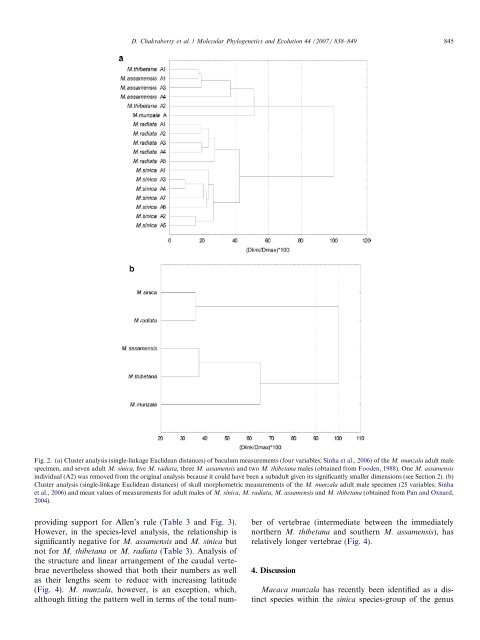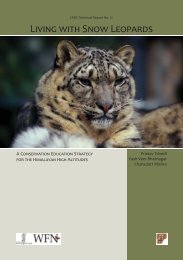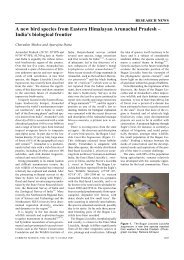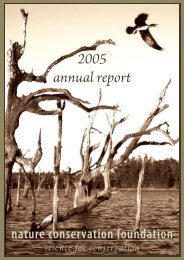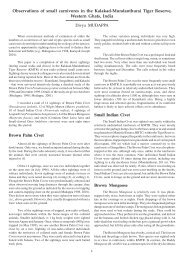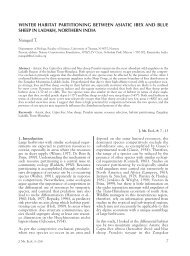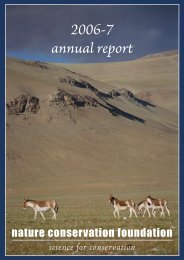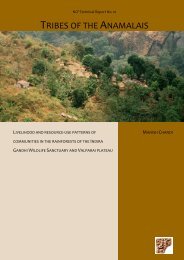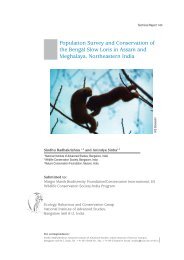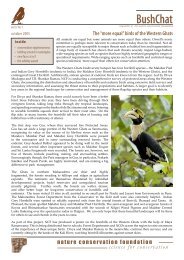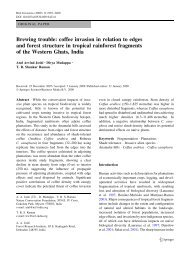Macaca munzala - Nature Conservation Foundation
Macaca munzala - Nature Conservation Foundation
Macaca munzala - Nature Conservation Foundation
You also want an ePaper? Increase the reach of your titles
YUMPU automatically turns print PDFs into web optimized ePapers that Google loves.
D. Chakraborty et al. / Molecular Phylogenetics and Evolution 44 (2007) 838–849 845<br />
Fig. 2. (a) Cluster analysis (single-linkage Euclidean distances) of baculum measurements (four variables; Sinha et al., 2006) of the M. <strong>munzala</strong> adult male<br />
specimen, and seven adult M. sinica, five M. radiata, three M. assamensis and two M. thibetana males (obtained from Fooden, 1988). One M. assamensis<br />
individual (A2) was removed from the original analysis because it could have been a subadult given its significantly smaller dimensions (see Section 2). (b)<br />
Cluster analysis (single-linkage Euclidean distances) of skull morphometric measurements of the M. <strong>munzala</strong> adult male specimen (25 variables; Sinha<br />
et al., 2006) and mean values of measurements for adult males of M. sinica, M. radiata, M. assamensis and M. thibetana (obtained from Pan and Oxnard,<br />
2004).<br />
providing support for Allen’s rule (Table 3 and Fig. 3).<br />
However, in the species-level analysis, the relationship is<br />
significantly negative for M. assamensis and M. sinica but<br />
not for M. thibetana or M. radiata (Table 3). Analysis of<br />
the structure and linear arrangement of the caudal vertebrae<br />
nevertheless showed that both their numbers as well<br />
as their lengths seem to reduce with increasing latitude<br />
(Fig. 4). M. <strong>munzala</strong>, however, is an exception, which,<br />
although fitting the pattern well in terms of the total num-<br />
ber of vertebrae (intermediate between the immediately<br />
northern M. thibetana and southern M. assamensis), has<br />
relatively longer vertebrae (Fig. 4).<br />
4. Discussion<br />
<strong>Macaca</strong> <strong>munzala</strong> has recently been identified as a distinct<br />
species within the sinica species-group of the genus


